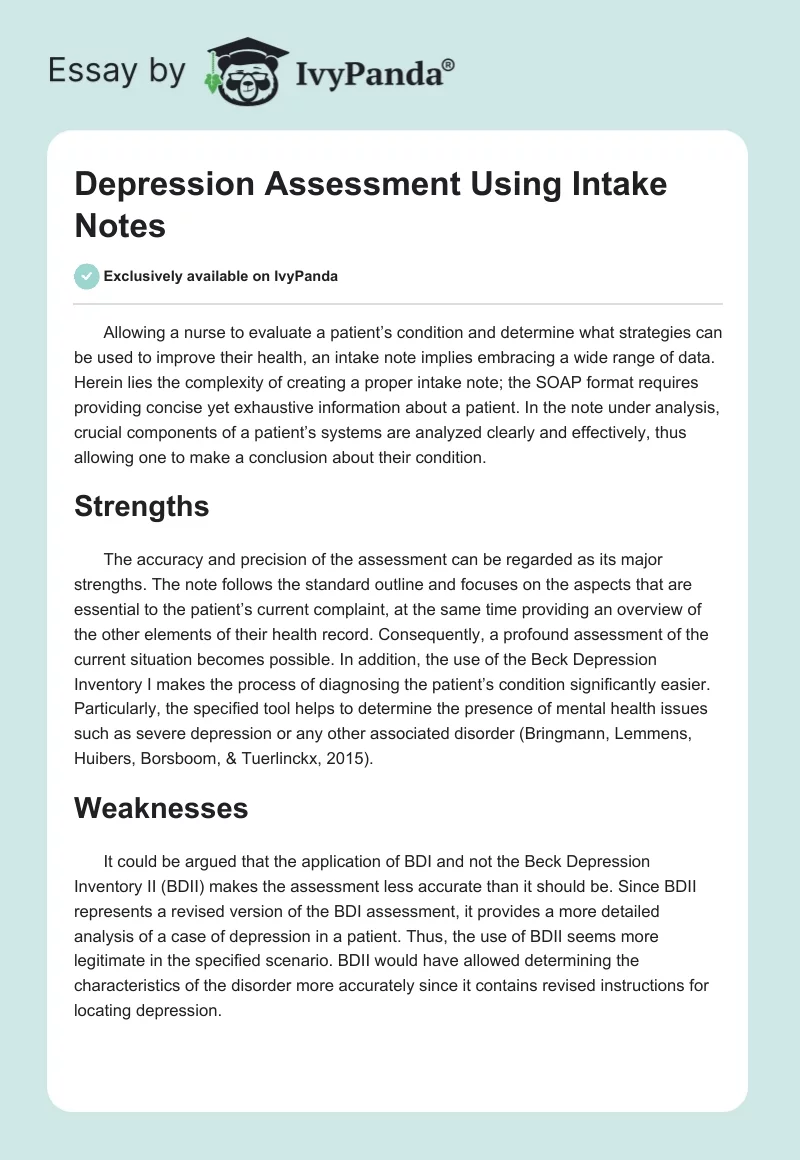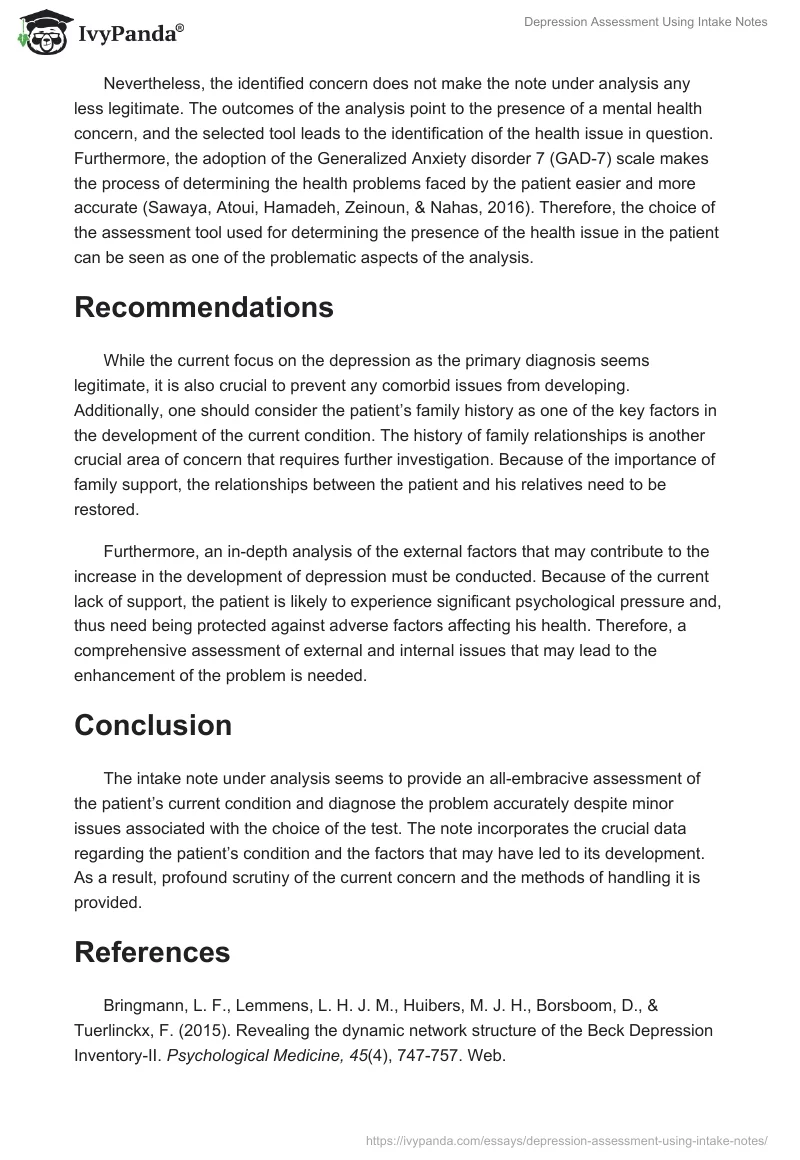Allowing a nurse to evaluate a patient’s condition and determine what strategies can be used to improve their health, an intake note implies embracing a wide range of data. Herein lies the complexity of creating a proper intake note; the SOAP format requires providing concise yet exhaustive information about a patient. In the note under analysis, crucial components of a patient’s systems are analyzed clearly and effectively, thus allowing one to make a conclusion about their condition.
Strengths
The accuracy and precision of the assessment can be regarded as its major strengths. The note follows the standard outline and focuses on the aspects that are essential to the patient’s current complaint, at the same time providing an overview of the other elements of their health record. Consequently, a profound assessment of the current situation becomes possible. In addition, the use of the Beck Depression Inventory I makes the process of diagnosing the patient’s condition significantly easier. Particularly, the specified tool helps to determine the presence of mental health issues such as severe depression or any other associated disorder (Bringmann, Lemmens, Huibers, Borsboom, & Tuerlinckx, 2015).
Weaknesses
It could be argued that the application of BDI and not the Beck Depression Inventory II (BDII) makes the assessment less accurate than it should be. Since BDII represents a revised version of the BDI assessment, it provides a more detailed analysis of a case of depression in a patient. Thus, the use of BDII seems more legitimate in the specified scenario. BDII would have allowed determining the characteristics of the disorder more accurately since it contains revised instructions for locating depression.
Nevertheless, the identified concern does not make the note under analysis any less legitimate. The outcomes of the analysis point to the presence of a mental health concern, and the selected tool leads to the identification of the health issue in question. Furthermore, the adoption of the Generalized Anxiety disorder 7 (GAD-7) scale makes the process of determining the health problems faced by the patient easier and more accurate (Sawaya, Atoui, Hamadeh, Zeinoun, & Nahas, 2016). Therefore, the choice of the assessment tool used for determining the presence of the health issue in the patient can be seen as one of the problematic aspects of the analysis.
Recommendations
While the current focus on the depression as the primary diagnosis seems legitimate, it is also crucial to prevent any comorbid issues from developing. Additionally, one should consider the patient’s family history as one of the key factors in the development of the current condition. The history of family relationships is another crucial area of concern that requires further investigation. Because of the importance of family support, the relationships between the patient and his relatives need to be restored.
Furthermore, an in-depth analysis of the external factors that may contribute to the increase in the development of depression must be conducted. Because of the current lack of support, the patient is likely to experience significant psychological pressure and, thus need being protected against adverse factors affecting his health. Therefore, a comprehensive assessment of external and internal issues that may lead to the enhancement of the problem is needed.
Conclusion
The intake note under analysis seems to provide an all-embracive assessment of the patient’s current condition and diagnose the problem accurately despite minor issues associated with the choice of the test. The note incorporates the crucial data regarding the patient’s condition and the factors that may have led to its development. As a result, profound scrutiny of the current concern and the methods of handling it is provided.
References
Bringmann, L. F., Lemmens, L. H. J. M., Huibers, M. J. H., Borsboom, D., & Tuerlinckx, F. (2015). Revealing the dynamic network structure of the Beck Depression Inventory-II. Psychological Medicine, 45(4), 747-757. Web.
Sawaya, H., Atoui, M., Hamadeh, A., Zeinoun, P., & Nahas, Z. (2016). Adaptation and initial validation of the Patient Health Questionnaire–9 (PHQ-9) and the Generalized Anxiety Disorder–7 Questionnaire (GAD-7) in an Arabic speaking Lebanese psychiatric outpatient sample. Psychiatry Research, 239, 245-252. Web.


